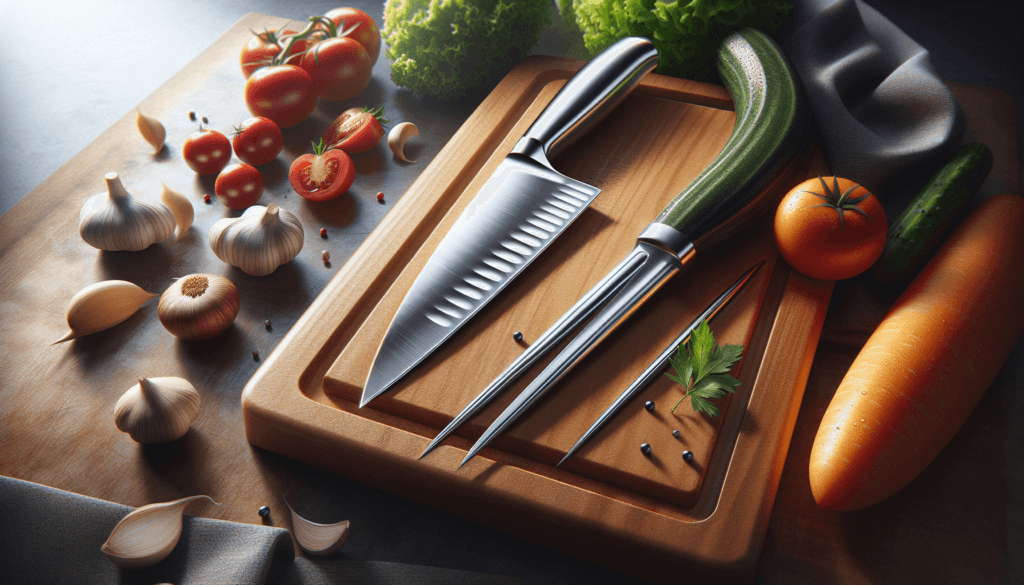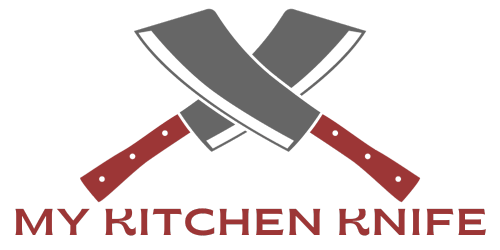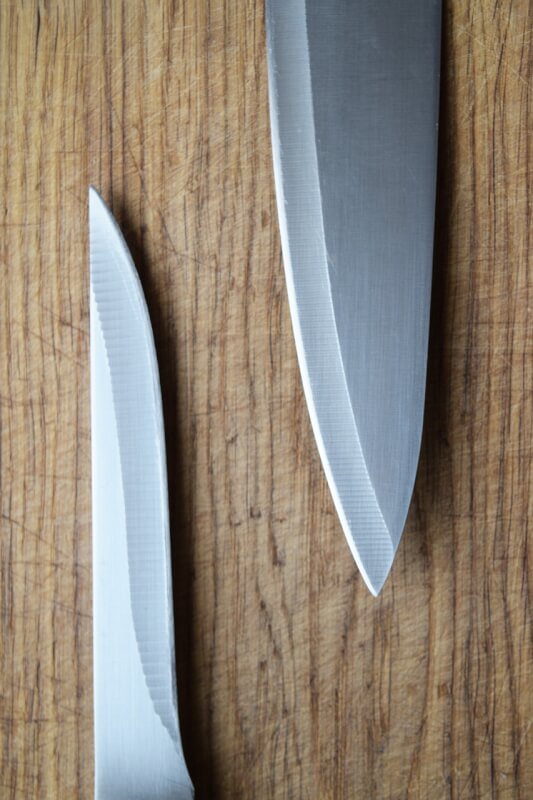When it comes to equipping your kitchen, one of the most essential tools you’ll need is a quality kitchen knife. A good knife not only makes meal preparation easier and more efficient but also enhances your overall cooking experience. However, choosing the perfect knife can be quite overwhelming. With an abundance of options available, it’s crucial to consider a few key factors that will help you make an informed decision. From blade materials and handle design to the knife’s purpose and maintenance, taking these factors into account will ensure that you invest in a kitchen knife that meets all your cooking needs.
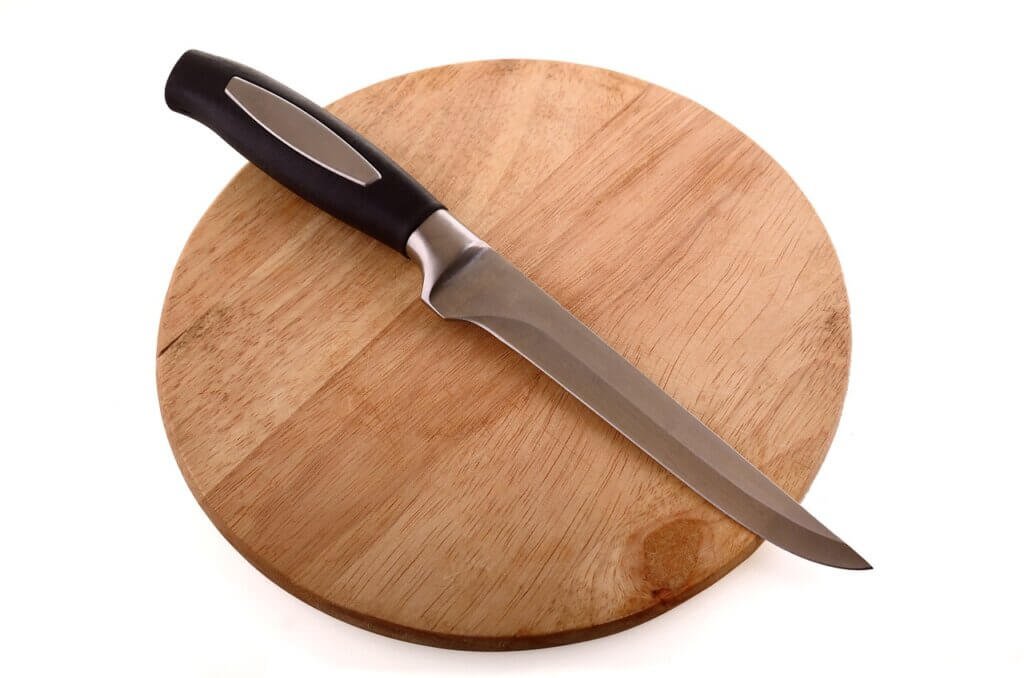
Material
Blade Material
The blade material is one of the most important factors to consider when buying a kitchen knife. Different materials have distinct properties that affect the knife’s performance and durability. Common blade materials include stainless steel, carbon steel, and high-carbon stainless steel.
Stainless steel blades are known for their corrosion resistance and low maintenance. They are less prone to rusting and staining, making them ideal for everyday use. However, stainless steel blades may be softer and require more frequent sharpening.
Carbon steel blades, on the other hand, are known for their sharpness and ability to hold an edge for a longer time. However, they are more reactive and can rust if not properly cared for. This type of blade material requires regular maintenance and drying to prevent corrosion.
High-carbon stainless steel blades offer the best of both worlds. They have the durability and corrosion resistance of stainless steel with the added sharpness and edge retention of carbon steel. These blades are often more expensive but provide excellent performance in the kitchen.
Handle Material
The handle material is another crucial aspect to consider when selecting a kitchen knife. The handle plays a significant role in your comfort and grip while using the knife. Common handle materials include wood, plastic, and stainless steel.
Wooden handles provide a traditional and elegant look to the knife. They offer a comfortable grip and good balance, but they require more care. Wood can absorb moisture and develop cracks over time, so it’s important to regularly oil and maintain wooden handles.
Plastic handles are lightweight, durable, and easy to clean. They are usually made of high-quality polymer materials that are resistant to water and heat. Plastic handles often have a textured design for a secure grip, making them suitable for busy kitchens.
Stainless steel handles are sturdy, hygienic, and offer a sleek and modern appearance. They are resistant to corrosion and can withstand high temperatures. However, they can become slippery when wet, so it’s important to ensure they have a textured or contoured design for a secure grip.
Blade Type
Chef’s Knife
The chef’s knife is a versatile and essential tool in any kitchen. It has a broad blade that tapers to a fine point. This type of knife is ideal for slicing, dicing, chopping, and mincing a wide variety of ingredients, including meats, vegetables, and herbs. The length of a chef’s knife typically ranges from 6 to 12 inches, providing enough blade surface for efficient cutting.
Santoku Knife
The Santoku knife originated in Japan and has gained popularity worldwide for its versatility and precision. It has a shorter and wider blade compared to a chef’s knife, allowing for more controlled slicing and dicing. The Santoku knife is often used for fine and delicate tasks, such as slicing fish, vegetables, and boneless meats.
Paring Knife
The paring knife is a small, narrow-bladed knife that is perfect for intricate tasks that require precision and control. It is typically used for peeling, trimming, and shaping fruits and vegetables. The short blade length, usually around 3 to 4 inches, offers excellent maneuverability and allows for detailed work.
Bread Knife
The bread knife features a long and serrated blade designed specifically for slicing bread without crushing or tearing it. The serrations allow the knife to glide through the crust while maintaining a soft interior texture. The length of a bread knife typically ranges from 7 to 10 inches to accommodate various loaf sizes.
Utility Knife
The utility knife is a smaller version of the chef’s knife and is incredibly versatile. It has a narrower and shorter blade, usually around 4 to 6 inches long. The utility knife can handle various tasks, such as slicing, mincing, and chopping smaller ingredients. Its compact size makes it a go-to choice for intricate tasks where precision is required.
Blade Length
Short Blade
A knife with a short blade, typically between 3 to 5 inches, provides excellent maneuverability and control. It is ideal for tasks that require precision, such as peeling, trimming, and intricate cutting. A short-bladed knife is also suitable for individuals with smaller hands or those who prefer a lighter and more agile tool.
Mid-sized Blade
A mid-sized blade, around 6 to 8 inches long, offers a good balance between maneuverability and versatility. It is the most common blade length for chef’s knives and is suitable for a wide range of kitchen tasks. This length provides enough surface area for efficient slicing, dicing, and chopping, making it a reliable all-around option.
Long Blade
A knife with a long blade, typically ranging from 9 to 12 inches, is preferred for tasks that require slicing or carving larger cuts of meat and fish. The longer blade length allows for smooth and even strokes, reducing the effort needed for cutting through bulkier ingredients. However, a longer blade can be less maneuverable for intricate tasks.
Knife Tang
Full Tang
A full tang knife has the blade extending all the way to the end of the handle, providing excellent balance, strength, and durability. This type of construction ensures that the blade and handle are seamlessly connected, reducing the risk of breakage. Full tang knives are often favored by professional chefs and serious home cooks for their superior stability and control.
Partial Tang
A knife with a partial tang has a blade that extends only partially into the handle. This construction offers a lighter weight and more affordable option. Partial tang knives are suitable for lighter tasks and everyday use, but they may not provide the same level of balance and durability as full tang knives.
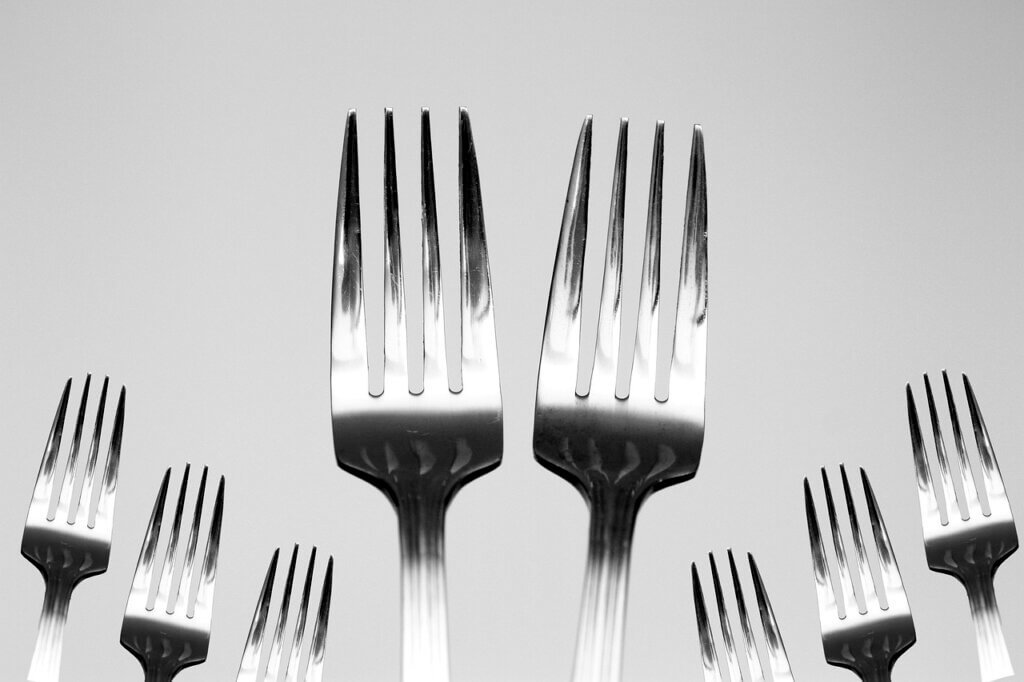
Knife Weight
Lightweight
A lightweight knife is advantageous for individuals who prefer agility and precision in their cutting tasks. These knives are often easier to maneuver, reducing fatigue during prolonged use. Lightweight knives are also convenient for individuals with smaller hands or those who prefer a lighter tool. However, they may lack the heft and stability needed for heavier tasks.
Medium Weight
A knife with a medium weight provides a good balance between maneuverability and stability. These knives are versatile and suitable for a wide range of kitchen tasks, including slicing, chopping, and mincing. They offer sufficient heft to tackle tougher ingredients while still allowing for easy handling.
Heavyweight
A heavyweight knife is ideal for tasks that require more force or cutting through denser ingredients. These knives provide additional stability and power, making them suitable for tasks like butchering meat or cutting through hard vegetables. However, the added weight may be tiring for some users during extended use, and they may not offer the same level of agility as lighter knives.
Knife Balance
Handle-Heavy Balance
A knife with a handle-heavy balance has more weight towards the handle. This type of balance offers increased control and stability, making it suitable for tasks that require precision and delicate cuts. The handle-heavy balance helps guide the knife through the food with less effort, allowing for better accuracy.
Blade-Heavy Balance
A knife with a blade-heavy balance has more weight towards the blade. This balance is advantageous for tasks that require more force or heavier cutting, such as chopping through bones or tough vegetables. The blade-heavy balance allows the knife to do the work, reducing the effort needed from the user. However, it may require more control and experience to prevent accidental slips or injuries.
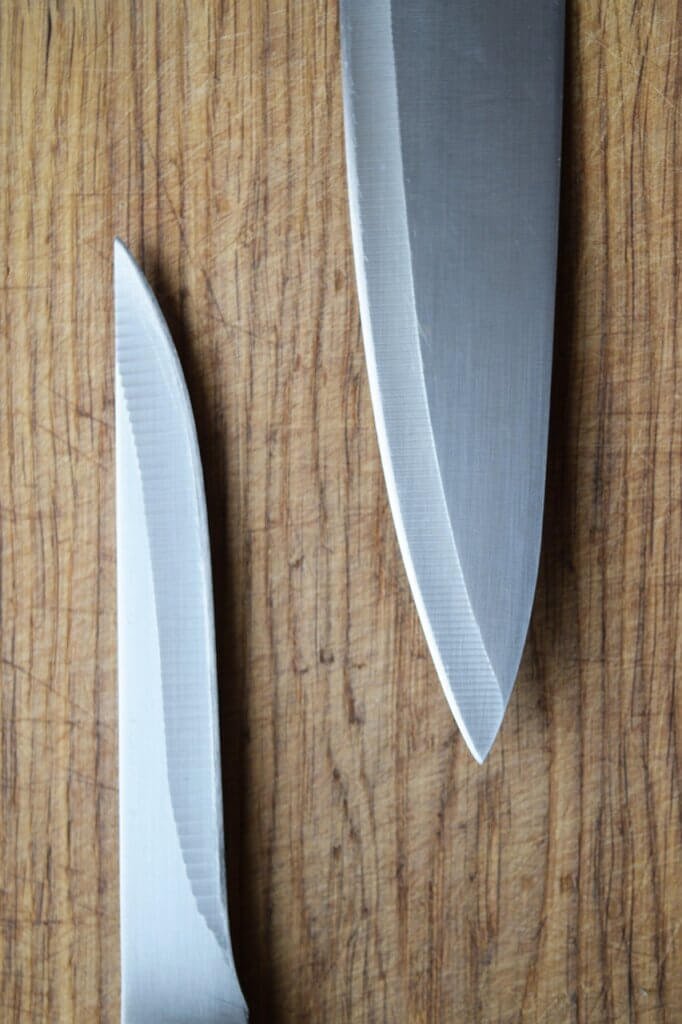
Handle Design
Ergonomic Handle
An ergonomic handle is designed with comfort and efficiency in mind. These handles are often contoured to fit the natural curves of the hand, providing a comfortable and secure grip. Ergonomic handles reduce strain and fatigue during prolonged use, making them ideal for busy kitchens or individuals with hand or wrist issues.
Traditional Handle
A traditional handle offers a classic and timeless look. These handles are typically straight and require a firm grip. While they may lack the ergonomic features of contoured handles, traditional handles provide a familiar and balanced feel. They appeal to individuals who prefer a more traditional and authentic kitchen experience.
Blade Edge
Straight Edge
A knife with a straight edge is the most common type found in kitchen knives. It delivers precise cuts and allows for easy sharpening. Straight edges are ideal for tasks that require accuracy and clean cuts, such as slicing vegetables, filleting fish, or carving meat. These knives are versatile and suitable for everyday kitchen tasks.
Serrated Edge
A serrated edge features small, scalloped teeth along the cutting edge. This type of edge is specifically designed for cutting through tough or crusty surfaces without crushing or tearing the food. Serrated knives excel at slicing bread, tomatoes, and other delicate produce, as well as cutting through harder exteriors like roasts or melons.
Granton Edge
A Granton edge, also known as a hollow edge or kullenschliff, has concave oval-shaped scallops along the blade’s edge. This design helps reduce friction and prevents food from sticking to the blade. Granton edges are commonly found in slicing or carving knives where thin, precise cuts are desired. They are particularly useful for slicing meats, fish, and fruits.
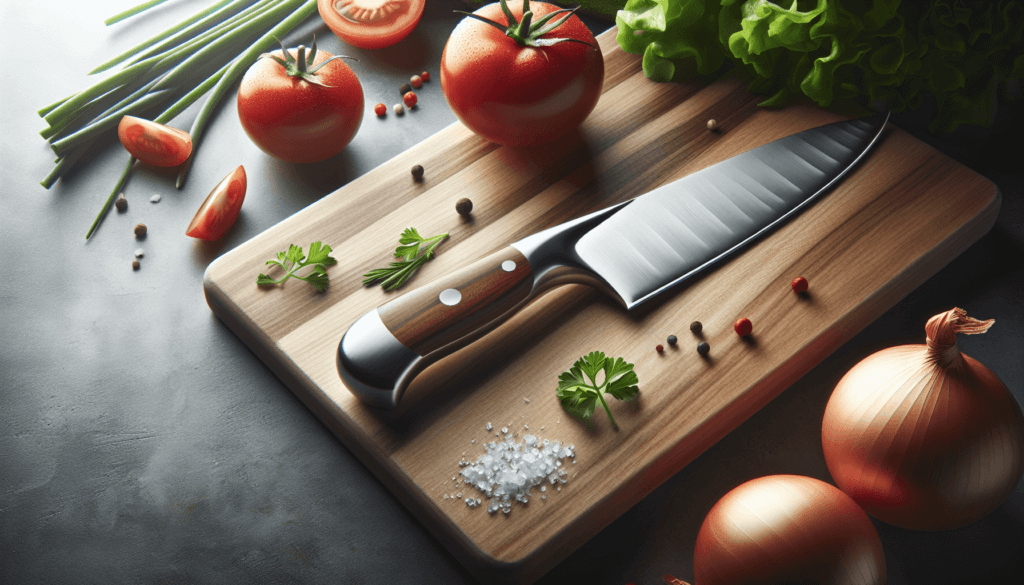
Maintenance
Ease of Sharpening
The ease of sharpening is an essential factor to consider when purchasing a kitchen knife. While all knives can be sharpened, some blade materials and edge types may require more frequent or specialized sharpening techniques. Stainless steel blades are generally easier to sharpen, while high-carbon steel blades offer an edge that lasts longer but may require more care during sharpening.
Straight-edge knives are typically easier to sharpen than serrated knives. With a straight edge, a sharpening stone or honing steel can be used to restore the blade’s sharpness. Serrated edges, on the other hand, require specialized sharpening tools or professional services to maintain their performance.
Dishwasher Safe
The dishwasher safe label indicates whether a knife can be safely cleaned in a dishwasher. While it may be convenient to clean knives in the dishwasher, it can cause damage to the blades and handles over time. High temperatures, harsh detergents, and mechanical movements can dull the blade, corrode metal, or loosen the handle. It is generally recommended to hand wash knives to maintain their performance and longevity.
Price
Budget Options
Budget options are great for individuals looking for an affordable kitchen knife without compromising quality. These knives often feature stainless steel blades and plastic or basic wooden handles. While they may not offer the same level of performance or durability as higher-end options, budget knives can still provide satisfactory results for everyday kitchen tasks.
Mid-range Options
Mid-range options are a step up from budget knives, offering a better balance between price and quality. These knives often feature high-carbon stainless steel blades and comfortable handle designs. They provide better performance, edge retention, and durability compared to budget knives. Mid-range options are suitable for home cooks who want a reliable and long-lasting knife without breaking the bank.
High-end Options
High-end options are top-of-the-line knives that offer the best in performance, craftsmanship, and materials. These knives often feature high-carbon or Damascus steel blades, premium handle materials, and superior construction techniques. High-end knives provide exceptional sharpness, edge retention, and balance. They are favored by professional chefs or avid home cooks who value the highest quality tools for their culinary endeavors.
In conclusion, when buying a kitchen knife, it’s important to consider factors such as blade and handle material, blade type, length, tang, weight, balance, handle design, blade edge, maintenance requirements, and price. Each factor plays a role in the knife’s performance, durability, and suitability for different culinary tasks. By understanding these factors and considering your own preferences and needs, you can choose a kitchen knife that will meet your expectations and become a reliable tool in your culinary adventures.
